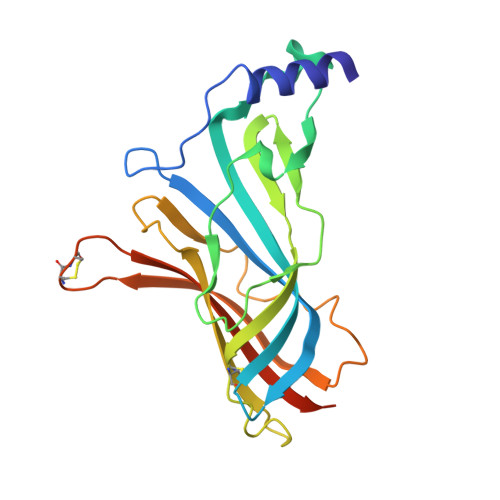Assembly of a Pi-Pi Stack of Ligands in the Binding Site of an Acetylcholine Binding Protein
Stornaiuolo, M., De Kloe, G.E., Rucktooa, P., Fish, A., van Elk, R., Edink, E.S., Bertrand, D., Smit, A.B., de Esch, I.J.P., Sixma, T.K.(2013) Nat Commun 4: 1875
- PubMed: 23695669
- DOI: https://doi.org/10.1038/ncomms2900
- Primary Citation of Related Structures:
4BFQ - PubMed Abstract:
Acetylcholine-binding protein is a water-soluble homologue of the extracellular ligand-binding domain of cys-loop receptors. It is used as a structurally accessible prototype for studying ligand binding to these pharmaceutically important pentameric ion channels, in particular to nicotinic acetylcholine receptors, due to conserved binding site residues present at the interface between two subunits. Here we report that an aromatic conjugated small molecule binds acetylcholine-binding protein in an ordered π-π stack of three identical molecules per binding site, two parallel and one antiparallel. Acetylcholine-binding protein stabilizes the assembly of the stack by aromatic contacts. Thanks to the plasticity of its ligand-binding site, acetylcholine-binding protein can accommodate the formation of aromatic stacks of different size by simple loop repositioning and minimal adjustment of the interactions. This type of supramolecular binding provides a novel paradigm in drug design.
- Division of Biochemistry and Center for Biomedical Genetics, Netherlands Cancer Institute, Plesmanlaan 121, 1066 CX Amsterdam, The Netherlands.
Organizational Affiliation:


















